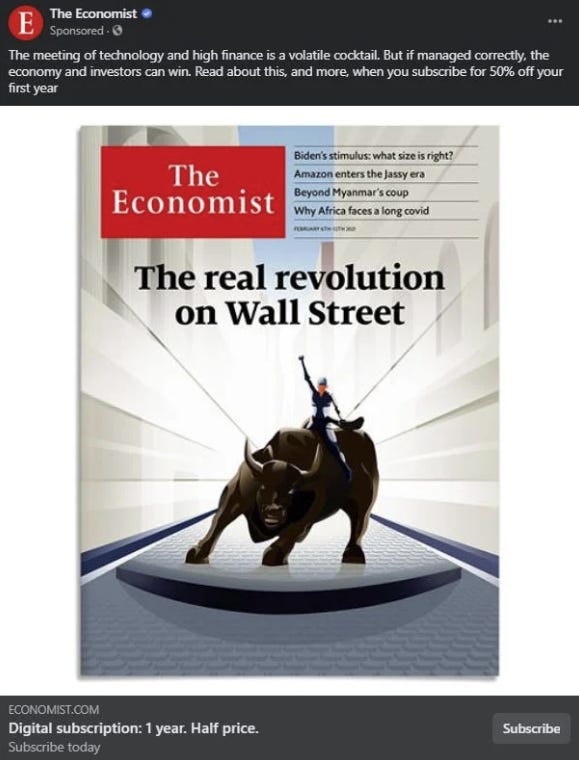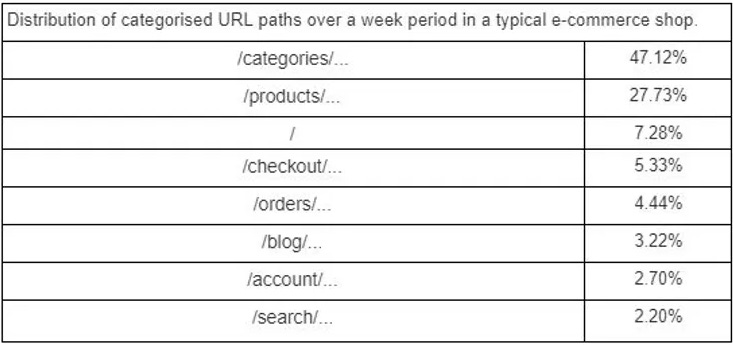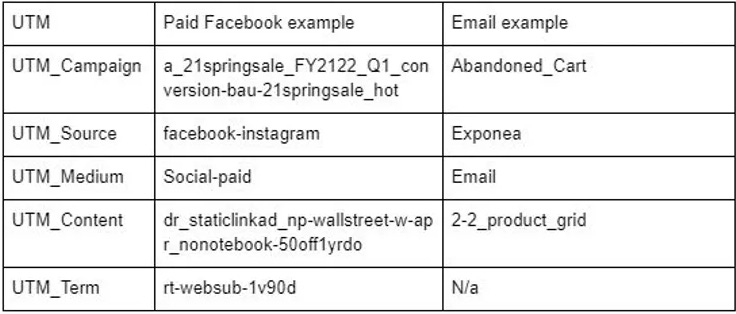What should Digital Marketers and Analysts know about URLs?
Ever wondered what makes the URLs so long?
A Uniform Resource Locator or known better by its acronym ‘URL’ is a reference to a web resource location on the internet. Think of it as the telephone number or an address. This is the string value inserted into a browser’s “address bar”. URLs can be quite long and usually contain these 4 elements: the scheme and the domain and optionally the path of the domain, and queries/tags attached at the end.
In this blog post, we will consider three common types of URLs you may encounter. We will break them down into their component parts and examine why they are there and what function they serve for web marketers and analysts.
Example URL A) TheEconomist Promoting Spring Sale (Facebook Ad)
Example URL B) Wall Street Journal Promoting Specific Article
Example URL C) Typical E-shop Category Page
https://finlaysonshop.com/collections/bathroom/
1. URL Scheme -
a) https://
b) https://
c) https://
The Scheme of a URL identifies the protocol to be used in accessing a web resource. The most well known examples of this is the http(s) application protocol that accesses websites. Other common schemes include ftp used for transferring files, mailto for sending emails, data for storing a table, image, etc.
2. URL Domain -
a) wsj.com
The domain name is the unique reference of the location. There can only be one website on a domain name. Because each combination of letters can only be used once, commonly known words, acronyms, etc. have become a digital asset with high valuations. For instance, in 2004, the domain name Beer.com was sold for 7 million USD. There are at least 37 publicly known purchases of domain names with transaction values of more than 3 million USD. You can view the full list here:
https://en.wikipedia.org/wiki/List_of_most_expensive_domain_names
3. URL Path -
a) /articles/march-jobs-report-unemployment-rate-2021-11617314225-11610326800
b) /
c) /collections/bathroom/
The path is the secondary location reference within the URL. It refers to the location of the web resource within the domain location itself. Sometimes path is “empty” characterised in analytic tools as a “/”. This signifies that the path sub-location is the homepage of the website.
In Datacop we also recommend using path as the primary sub-location to split your session_starts, session_ends and page_visits by; not by the URL whole. This is because the Query part of the URL can add a lot of different values at the end of it. Splitting page_visits by their whole URL value will produce results that seem correct, but are not showing the whole picture. Path is also very valuable in breaking down the session activity within the website itself.
A typical e-commerce shop would have around 8 areas of the website, as can be seen in the table below:
The “path” value of a URL in a page_visit, provides visibility into where most visitors’ web-activity is taking place. Below you can see an example of the distribution of the activity on such an e-shop. These numbers may vary from site to site. For instance an e-shop with a much larger catalogue would likely experience more search activity. If we are examining the site of a telecom website, the account may make up to a third of all the activity on the site. In many e-commerce sites we can expect product and category page visits to make up the majority of all the activity on site, as can be seen in the example above.
4. URL Query/Tag
a) ?mod=e2fb&fbclid=IwAR2ks5DNstcvuysT1BPy2RQMYFXKGqDZsNgfMBoc-Fy8UeuuffOga0v0I_s
b) ?&utm_campaign=a_21springsale_FY2122_Q1_conversion-bau-21springsale_hot&utm_medium=social-paid&utm_source=facebook-instagram&utm_content=dr_staticlinkad_np-wallstreet-w-apr_nonotebook-50off1yrdo&utm_term=rt-websub-1v90d&fbclid=IwAR2Iv5837bZVWp4BUATFhV_7d_yN-2AfxMmUdzTxcvh93mmrF7QGblCvN-w
c) N/a
Query is an optional component of the URL. If present in the URL, It is always preceded by a question mark symbol (?). Query is used in digital marketing campaign tagging in channels like E-Mail, Online Advertising, Push Notifications, etc. It is best practice for mature e-commerce marketing teams to have a UTM tagging structure in place for each “clickable” marketing channel that leads back to their website.
In Datacop we work frequently with the tagging queries. There are two types of tags web analysts and marketers should be aware of: Click Identifiers and UTM Tags.
Click Identifiers are used by Online Advertisement providers such as Facebook, Google and Bing to be able to attribute traffic and conversion to specific traffic channels. If a URL contains one of these click identifiers you can know for sure that is traffic generated by online advertising campaigns. These values are parsed out from the URLs to form separate event attributes that are used to build definitions for Traffic Source event classifications.
UTM Tags were invented by Urchin a company that was acquired by Google in 2005 reportedly for $30 million to resolve the issue of manual digital campaign tagging. Certain UTM settings are often set by default by most marketing automation providers, however having a well thought out UTM structure helps any marketing team to make sense of their campaign data. Therefore, if the marketing campaigns are set with an appropriate UTM structure - it is possible for the marketer and analyst to track down traffic and revenues that resulted from the investments into online advertising, even down to the campaign level.
If you found this post valuable
We hope you found this article useful. If you did, we'd appreciate it if you subscribed (at no cost!) to stay updated with our latest publications.






